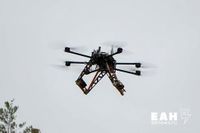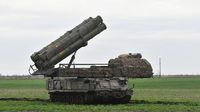On April 9, 2025, an attack by drones on a military airfield in Orenburg was successfully repelled by Russian air defense forces. According to the acting governor of the Orenburg region, Evgeny Solntsev, the situation remains under control with no reported casualties or destruction. He urged local residents not to panic, emphasizing that the military was managing the situation effectively.
In a statement shared across social media, Solntsev confirmed, "Today, the Russian Air Defense forces repelled an attack by UAVs of plane type on a military airfield in the Orenburg region. There are no casualties or destruction. I ask everyone not to panic; the situation is under control." His reassurances came as residents in the southern part of Orenburg and nearby suburbs reported hearing loud bangs earlier that morning.
The Russian Ministry of Defense later reported that four Ukrainian fixed-wing drones were intercepted and destroyed in the Orenburg region between 6:30 AM and 7:05 AM Moscow time on April 9. This incident was part of a broader pattern of drone activity, with the Ministry revealing that a total of 158 Ukrainian drones were intercepted and destroyed from 8:00 PM Moscow time on April 8 to 6:00 AM on April 9.
Previous attacks had already raised concerns in the region. On the night of March 23, 2025, drones targeted the Rostov region, leading to the tragic death of one individual on a highway. That night, Russian air defense forces successfully repelled a massive UAV assault that occurred across multiple districts in Rostov. Additionally, a drone crash in the Khutor Kayukovka area damaged windows in a private residence, although the occupants were unharmed.
During the significant drone attack on March 20, 2025, Russian air defense forces shot down an impressive 132 drones, with the bulk of these interceptions occurring in the following regions: 54 drones were downed over Saratov, 40 over Voronezh, and 22 over Belgorod. Further interceptions included nine drones over Rostov, three each over Kursk and Crimea, and one over Lipetsk.
The frequency of these drone attacks has prompted heightened vigilance among local authorities. The Orenburg regional dispatch service confirmed the threat of a drone attack, advising residents on precautionary measures during potential aerial incidents. Emergency services have published guidelines for public safety in the event of air attacks, reflecting the serious nature of the threat posed by UAVs.
As tensions continue to escalate in the region, the incidents underscore the ongoing conflict dynamics between Ukraine and Russia, particularly concerning the use of drone warfare. The Ukrainian Armed Forces have increasingly employed drones in their operations, leading to a series of retaliatory measures from Russian defense systems.
Despite the recent attacks, officials maintain that air defenses are effectively safeguarding critical military installations. Evgeny Solntsev's comments reflect a broader strategy aimed at reassuring the public while maintaining operational security in the face of ongoing threats.
As the situation develops, the Russian government remains committed to enhancing its air defense capabilities to counteract the increasing frequency of drone incursions. The incidents have raised questions about the effectiveness of current security measures and the potential need for further investment in military technology to protect against UAV threats.
Local residents have expressed mixed feelings about the situation. While some remain calm and trust in the capabilities of the military, others are concerned about the potential for future attacks and the safety of their communities. The emotional toll of living under the threat of drone warfare is palpable, as families grapple with the uncertainty of their safety.
The international community is also closely monitoring the situation, as the implications of the ongoing conflict extend beyond regional borders. Analysts suggest that the use of drones may become a defining feature of modern warfare, raising ethical questions and concerns about civilian safety in conflict zones.
In response to these developments, local authorities are urging residents to remain vigilant and report any suspicious activities. The emphasis on community involvement reflects a broader understanding of the importance of public awareness in ensuring safety during times of heightened tension.
As air defense systems continue to intercept UAVs, the situation in Orenburg serves as a reminder of the complexities and challenges faced in contemporary military engagements. The balance between maintaining security and assuring public safety remains a critical focus for both military and civilian leaders.
With the conflict showing no signs of abating, the people of Orenburg and surrounding regions must navigate a landscape marked by uncertainty and the ever-present threat of drone warfare. The resilience of the community, coupled with the effectiveness of military defenses, will play a pivotal role in shaping the future of the region.






